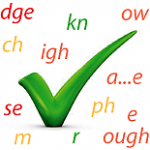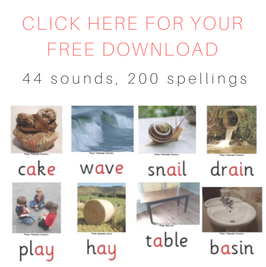Tell publishers to stop selling predictable texts for early literacy!
11 RepliesSomeone from a major educational publisher rang me today to extol the virtues of their new range of decodable texts for beginning readers. I think she was hoping I might help promote them.
I’ve had a look at their decodables, but haven’t bought any for our decodable books display, because (A) our budget is tight, (B) I’ve been fairly underwhelmed by the new decodables from mainstream publishers I have bought, and (C) the last time I checked, they were still selling predictable/repetitive texts.
The only thing I like about predictable/repetitive texts for beginning readers is making spoof AI ones:

I consider predictable/repetitive texts harmful products for vulnerable beginners. Anyone who works in literacy intervention can tell you that undoing the bad habits encouraged by these books is hard work. They encourage children to memorise and guess words, not decode them. Here’s a daggy video I made nearly a decade ago explaining what’s wrong with them:
As education academics Simmone Pogorzelski, Susan Main and Janet Hunter wrote in their excellent 2021 AARE blog post Decodable or predictable: why reading curriculum developers must seize one: “there is no instructional value in using ‘levelled’ predictable readers to support children’s development once formal reading instruction has commenced”.
Margaret Goldberg of the Right To Read Project has some great ideas for repurposing predictable/repetitive books already in schools. By now there should be no market for new predictable/repetitive books for beginning readers. Are they really still available? Check publisher/vendor websites for yourself, e.g. here, here, here, here and here.
If you’re speaking to publishers/vendors keen to get a slice of the booming decodable books market, but still selling predictable/repetitive texts, please tell them this is not smart marketing. It shows they’re newcomers to the difficult task of producing decodables, and not fully committed to teaching young kids to decode, not memorise and guess. If they want their decodables to be taken seriously, they need to ditch predictable/repetitive texts, or shift them to their EAL catalogues, for use in teaching vocabulary and sentence structure.
There’s now such a confusopoly of decodable texts available, I don’t envy teachers and librarians the task of deciding what to buy. I’m a bit confused myself, and we have heaps of them, we aren’t relying on website or catalogue information. Which are good quality? How many of each? Which ones are OK to use with older kids? What about struggling readers who will only read about gaming/unicorns/football/princesses/cars? Please share your thoughts and thorny questions in the comments.
Alison Clarke



Of equal concern is that representatives from organisations, such as Down Syndrome Victoria, who are viewed as reputable by the educators they visit and the parents of students they support, are still promoting predictable texts and a balanced literacy approach to reading.
Oh dear, that’s not good. I looked for a recent meta-analysis on Google Scholar re the evidence on how best to teach people with Down Syndrome to read, and found a 2012 article called “Reading skills in children with Down syndrome: A meta-analytic review” by a very well-respected international team, which isn’t consistent with a Whole Language approach but says that vocabulary is more of a factor in learning to read for kids with Down Syndrome than phonemic awareness. The link is here: https://www.academia.edu/download/113587600/j.ridd.2011.09.01920240421-1-hf2bmp.pdf. Perhaps the people from Down Syndrome Victoria think predictable/repetitive texts develop vocabulary? I’ll have to take a look at their website. Thanks for pointing this out, we have a client with Down Syndrome who is making slow progress and were just discussing how to best help her make progress yesterday, so it’s a good time for us to research this. Alison
I share your frustration . As a reading teacher in a primary school , I am constantly educating teachers to understand what a good quality decodable text looks like. Every time the next ‘shiny’ and new’ series comes out by publishers that also produce levelled texts, I hear ‘but it says decodable’ . A closer look at the texts show little understanding by the writers what is required to best serve students with learning difficulties and all children learning to read. Parents are also part of this. Choosing books on online platforms in preference to what I consider to be ‘gold standard’ books available at our school.
My main recent personal experience of repetitive texts was some readers that had been translated into Japanese. For them it was good sounding out practice because Japanese hiragana has good grapheme-phoneme correspondence. The one different word per page was easy to guess the meaning of thanks to the illustration, even if I didn’t know all the words in the repetitive sentence. For Japanese children, the text would probably be able to be decoded and understood.
This wouldn’t work in English for people coming from a different language due to the reasons you state. I’ve heard that phonics readers are used by some language teachers to teach English to Japanese students.
Yes, Margaret Goldberg suggests using predictable texts with English Language Learners, and they could be very useful for teaching vocabulary and sentence structure. Hopefully they all get repurposed well, nobody likes throwing books away, especially fairly new books, even cutting them up and using the pictures for artwork would be better than wasting them.
Thank you Alison. Your latest video on demonstrating the confusion between teaching single letter phonics and throwing “readers” at the students that have greater lexical complexity that they cannot access readily, is the sharpest presentation to non-believers in phonics and phonological awareness that I have ever seen, although everything you put out is great! Yes, there is a confusopoly of “readers” out there. I use the LLLL Big World books successfully with older readers (even grade 5 and 6) because they are topical to match interests and are still decodable. The other series is Fox Kid, that looks like a graphic novel. It blends into the class with the Diary of a Whimpy Kid etc as read by the more able readers. These LLLL resources are very helpful for Dyslexic students as well.
Adam Tate
I’ve been seeing quite a few “items” in the fluency space lately that had me wondering about predictability and where we draw the line between formats such as predictable texts and repeated word presentations.
For example, fluency (or reading) pyramids that start with one word and slowly build to phrase or sentence level, one word at a time, seem to have a similar repetitive style about them to predictable texts.
And I’ve seen some social media advice suggesting that students who are having trouble decoding, should “read” a passage several times to help with fluency, but isn’t this akin to the “whole word” method of teaching reading, especially if they’re not yet decoding? I would value your thoughts.
Hi Rose, I don’t know of any evidence for fluency/reading pyramids, so I don’t use them, sorry. Jan Hasbrouck is the person who seems to know the most about fluency, and I have her 2024 book written with Nancy Young, but I haven’t read it yet and I can’t find the topic “repeated reading” in the contents, and there’s no subject index at the end of it. Sigh. You can watch her 2023 presentation for the Reading League on fluency as the key to comprehension here: https://www.youtube.com/watch?v=zCnQ9VTswKo. The best reasons I can think of to ask kids to repeatedly read the same texts are 1. to understand them better (we all reread things if we didn’t get all the information we wanted from it on the first read) and 2. to get additional exposure to the same words, in order to orthographically map them and thus be able to instantly recognise them and read them fluently in future. Lots of words aren’t very frequent, and some children need to read the same word multiple times before they can map it into long-term memory. However, asking a kid to reread a text they weren’t interested in the first time they read it can be counterproductive. And of course I wouldn’t want to ask any child to repeatedly read a text containing words with spelling patterns/word structures they haven’t had a chance to study properly. I hope that’s helpful. All the best, Alison
Hi Rose,
I also find it confusing when some practices sound like they are evidence based but also seem mirror outdated practices. Jan Hasbrouck has books and articles on developing and measuring reading fluency. I saw presentation of hers last year and it was really informative. I find there is a distinction between the skill of fluent blending of sounds to read and decode a word, compared to reading fluently for comprehension of a text. Repeated reading activities are for students who can already decode and it helps them to build passage reading fluency and comprehension. There is clear description of evidence based repeated reading on five-from-five webpage.
On the other hand, decoding words is all about orthographic mapping, blending and segmenting. Regards, Cecile
Hi Alison,
predictable texts are still very useful for EAL students and can be used alongside decodables and systemic phonics. Unfortunately, learning grin, Unit 9, for example, before smile, doesn’t help students understand the most common spoken language they will encounter. Similarly decodables don’t allow for a field, such as fruit and vegetables, to be clustered and therefore built upon across a variety of books.
I know you may be aghast when I say this Alison, but I have just ordered some of Nelson’s multicultural texts – all predictable like the PM texts we know from years gone by. These old fashioned but new ‘levelled’ texts are all set in countries on the Arabian Peninsula. Perhaps this is a growing market for the company? The international students we have from that part of the world LOVE them and are really motivated to read them. They then become a great springboard for independent writing. All these students are beyond Foundation.
I understand that Foundation students benefit from a large diet of decodables but EAL students still need some vocab support through predictable texts at this level too.
Hi Julie, good point as usual, maybe I should change the title to “Tell publishers to move their predictable texts from early literacy catalogues to EAL catalogues”, but it’s a bit of a mouthful. I think one of the suggestions for repurposing predictable texts in the page I link to about this is to use them to teach spoken vocab and sentence structure, not teach early reading. Great to hear that you’re able to find texts set in your students’ home countries, that used to always be a problem for me. I’ll have to edit the post somehow, but I’m too tired to do it tonight. Thanks for the reality check, Alison.